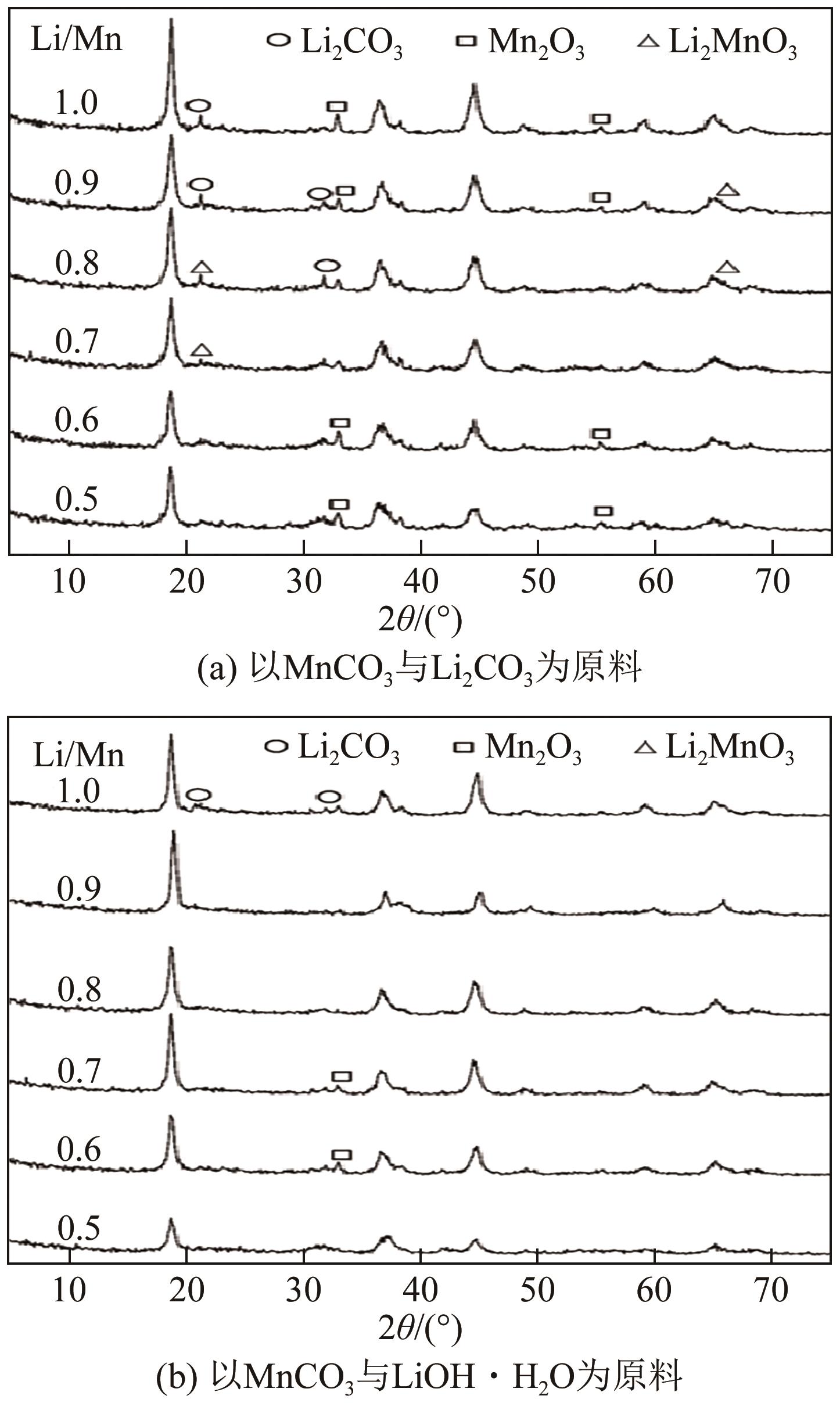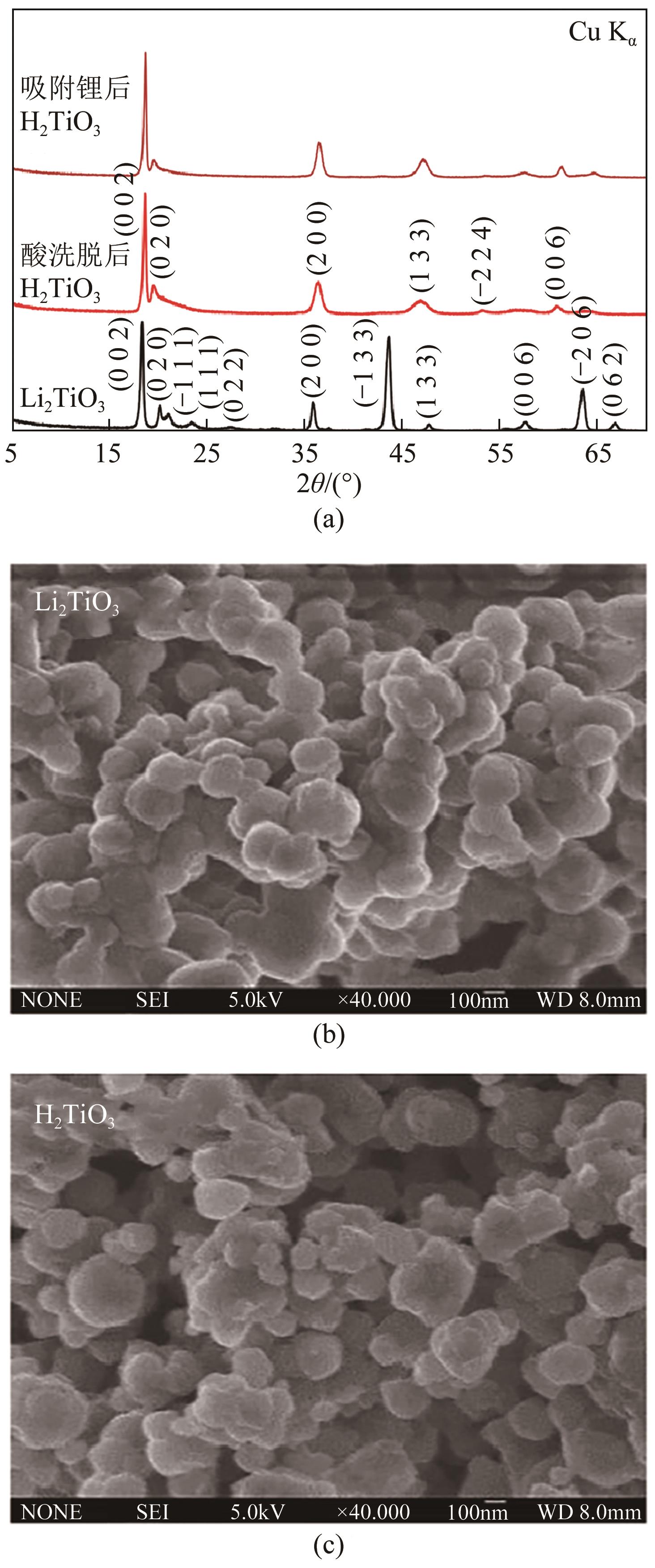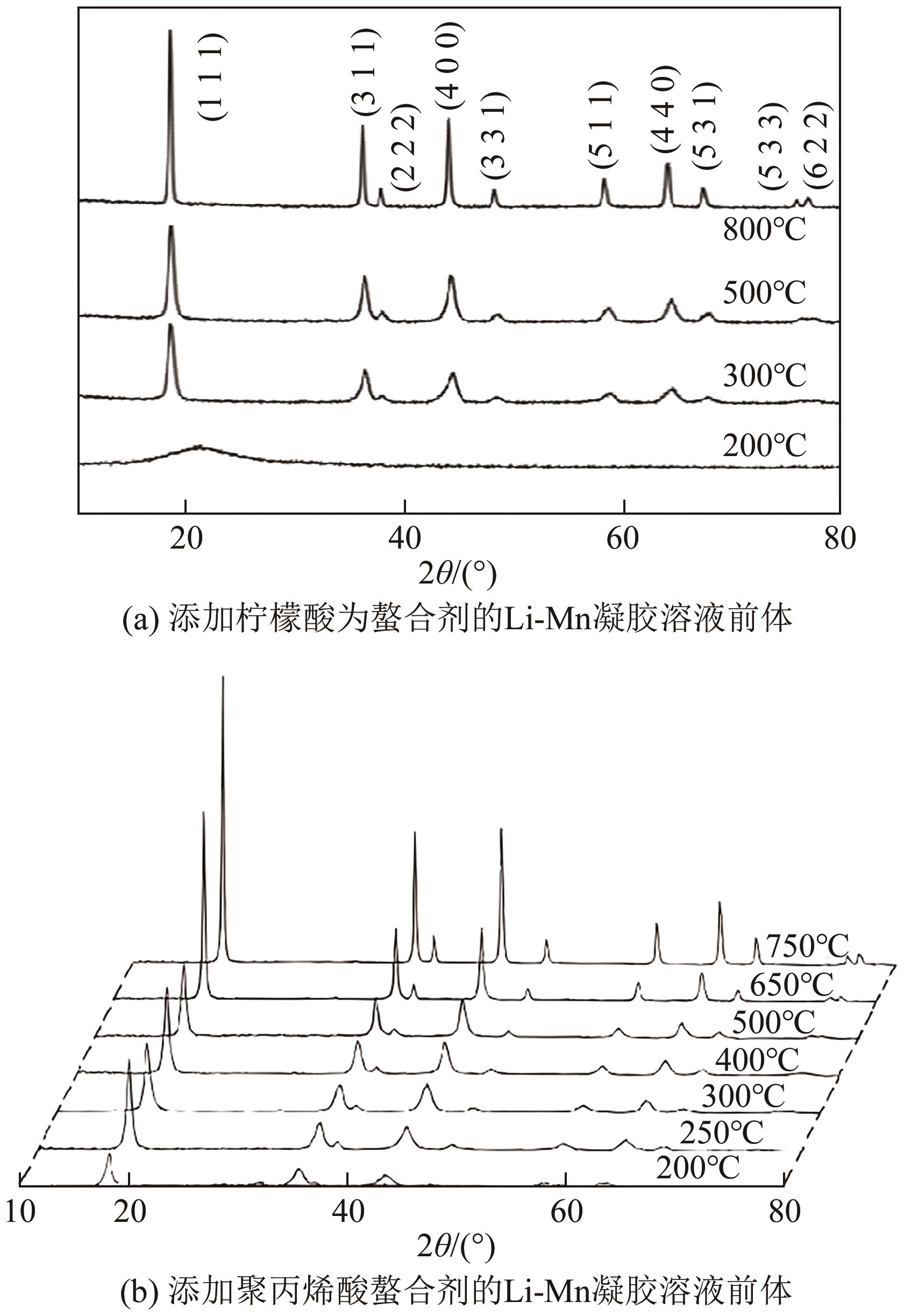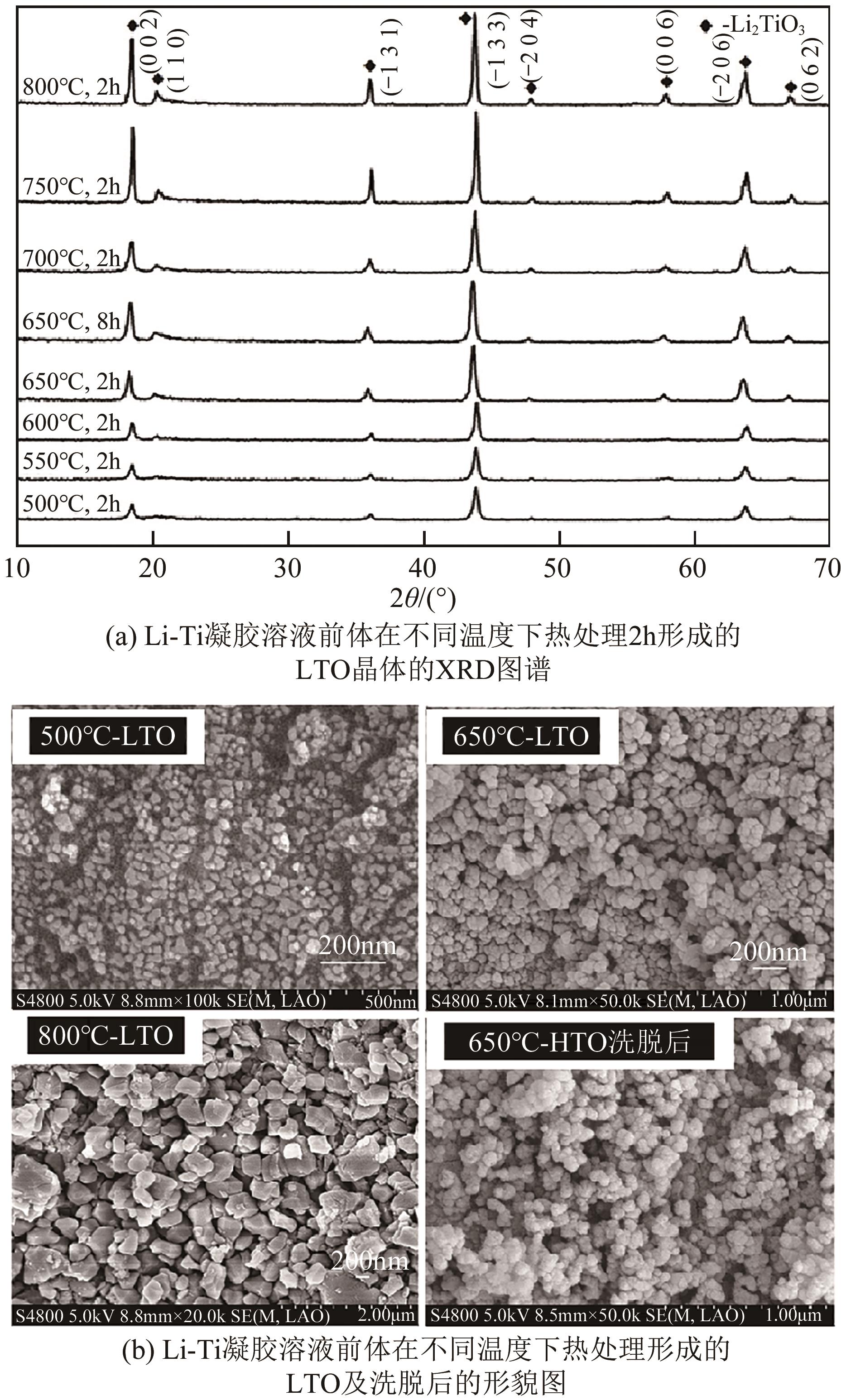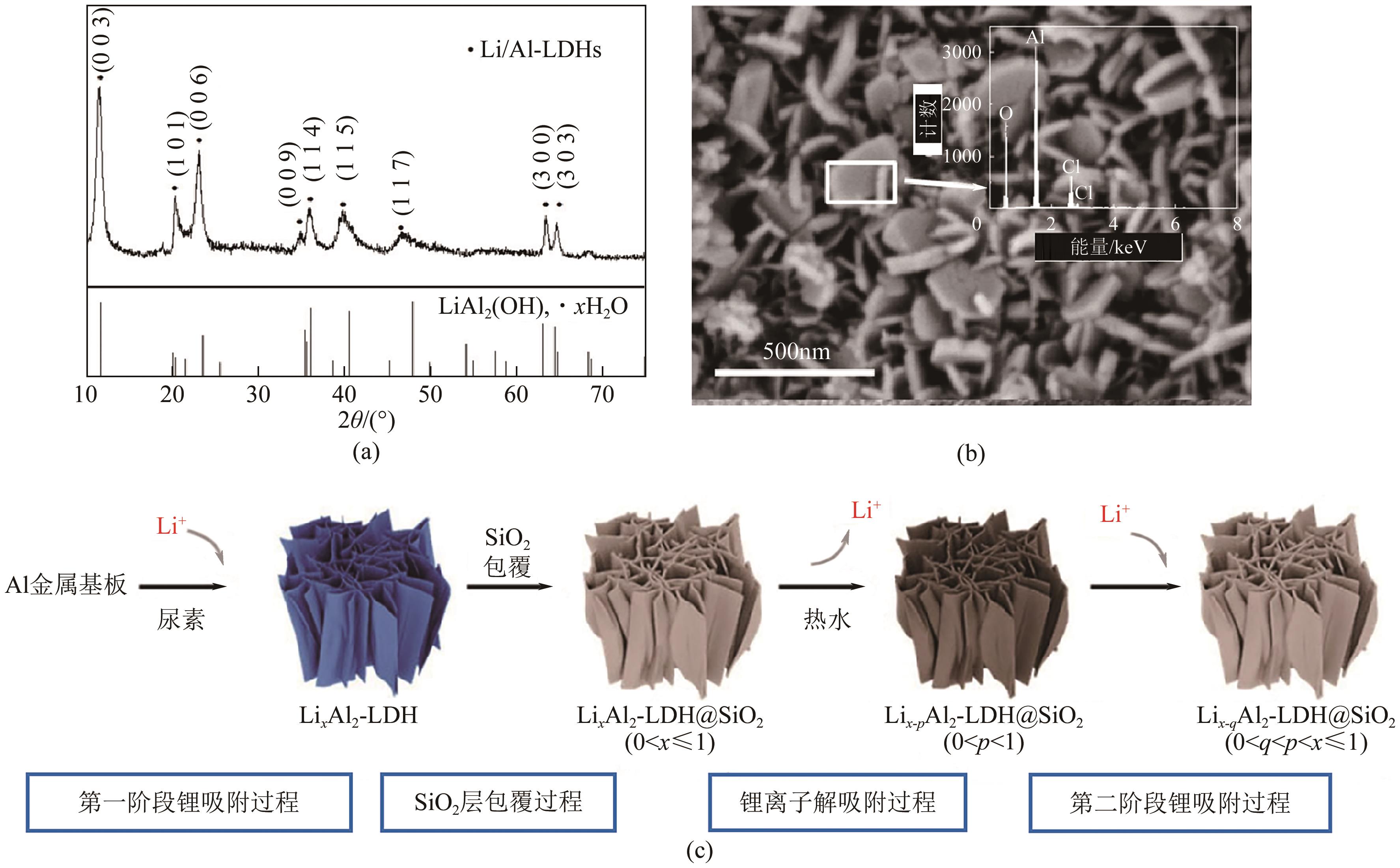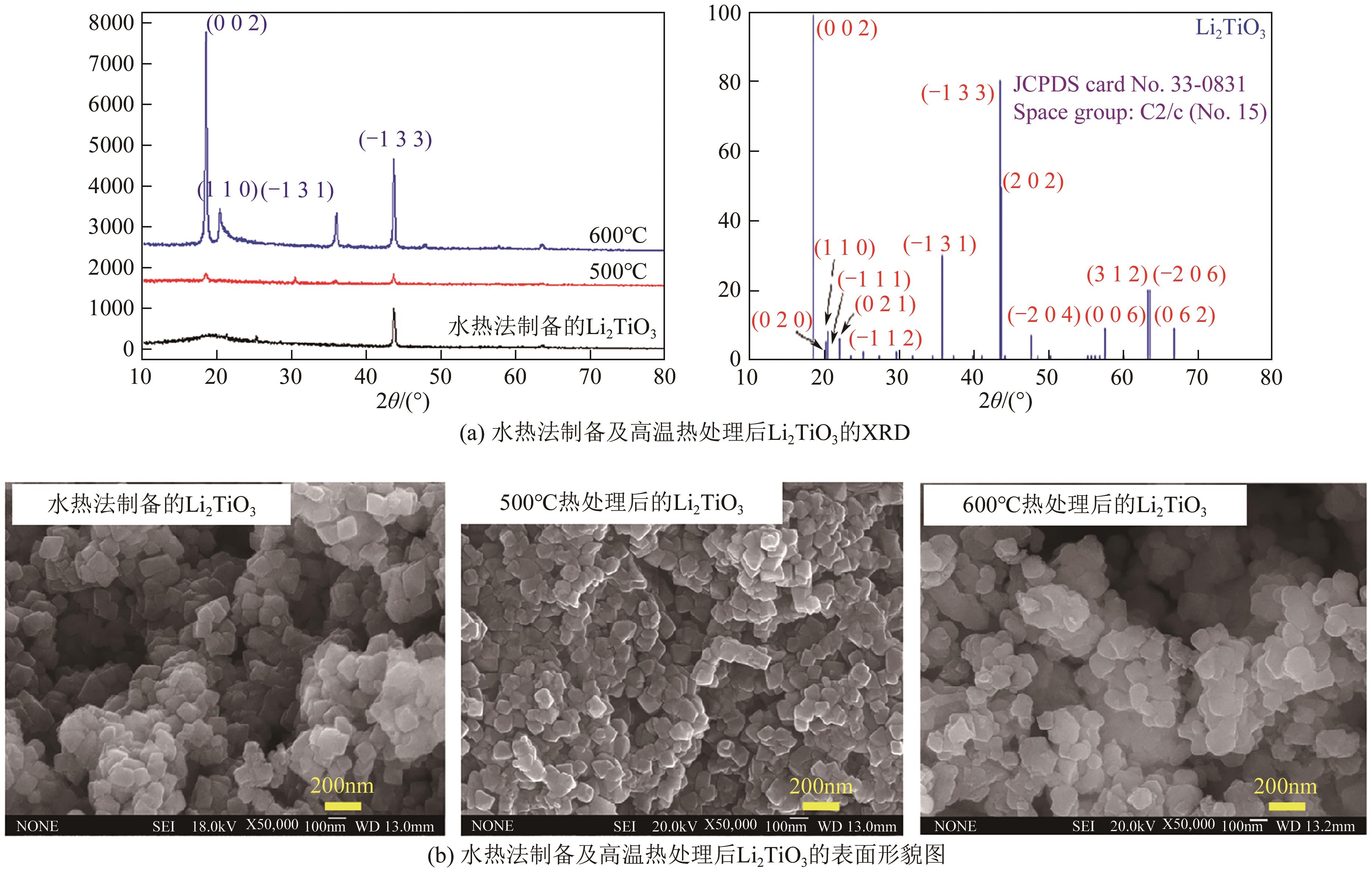Chemical Industry and Engineering Progress ›› 2024, Vol. 43 ›› Issue (8): 4173-4186.DOI: 10.16085/j.issn.1000-6613.2023-1129
• Invited review •
Research progress on preparation methods of inorganic metal lithium ion sieve materials
BIAN Weibai1,2,3( ), ZHANG Ruixuan1, PAN Jianming2(
), ZHANG Ruixuan1, PAN Jianming2( )
)
- 1.School of Electrical and Optoelectronic Engineering, Changzhou Institute of Technology, Changzhou 213032, Jiangsu, China
2.School of Chemistry and Chemical Engineering, Jiangsu University, Zhenjiang 212013, Jiangsu, China
3.Tianhe Pharmaceutical Co. , Ltd. , Yangzhou 225267, Jiangsu, China
-
Received:2023-07-06Revised:2023-08-14Online:2024-09-02Published:2024-08-15 -
Contact:PAN Jianming
无机金属锂离子筛材料制备方法研究进展
- 1.常州工学院光电工程学院,江苏 常州 213032
2.江苏大学化学与化工学院,江苏 镇江 212013
3.扬州天和药业有限公司,江苏 扬州 225267
-
通讯作者:潘建明 -
作者简介:卞维柏(1988— ),男,博士后,副教授,研究方向为选择性吸附分离。E-mail:bianwb@czu.cn。 -
基金资助:国家自然科学基金(22202022);江苏省高等学校自然科学基金(22KJB450001)
CLC Number:
Cite this article
BIAN Weibai, ZHANG Ruixuan, PAN Jianming. Research progress on preparation methods of inorganic metal lithium ion sieve materials[J]. Chemical Industry and Engineering Progress, 2024, 43(8): 4173-4186.
卞维柏, 张睿轩, 潘建明. 无机金属锂离子筛材料制备方法研究进展[J]. 化工进展, 2024, 43(8): 4173-4186.
share this article
Add to citation manager EndNote|Ris|BibTeX
URL: https://hgjz.cip.com.cn/EN/10.16085/j.issn.1000-6613.2023-1129
| 高温固相反应法 | |||
| 溶胶-凝胶法 | |||
| 共沉淀法 | |||
| 水热法 |
| 高温固相反应法 | |||
| 溶胶-凝胶法 | |||
| 共沉淀法 | |||
| 水热法 |
| 1 | 李霞, 邓昭平, 李晶. 高岭土在盐湖卤水提锂中的应用[J]. 化工进展, 2017, 36(6): 2057-2063. |
| LI Xia, DENG Zhaoping, LI Jing. Extraction of lithium from salt lake brine with kaolinite[J]. Chemical Industry and Engineering Progress, 2017, 36(6): 2057-2063. | |
| 2 | OBER Joyce A. Mineral commodity summaries[R]. Reston, VA: U.S. Geological Survey, 2018. |
| 3 | OROOJI Yasin, NEZAFAT Zahra, NASROLLAHZADEH Mahmoud, et al. Recent advances in nanomaterial development for lithium ion-sieving technologies[J]. Desalination, 2022, 529: 115624. |
| 4 | SWAIN Basudev. Recovery and recycling of lithium: A review[J]. Separation and Purification Technology, 2017, 172: 388-403. |
| 5 | LUO Guiling, LI Xiaowei, CHEN Linlin, et al. Electrochemical recovery lithium from brine via taming surface wettability of regeneration spent batteries cathode materials[J]. Applied Energy, 2023, 337: 120890. |
| 6 | 蒋晨啸, 陈秉伦, 张东钰, 等. 我国盐湖锂资源分离提取进展[J]. 化工学报, 2022, 73(2): 481-503. |
| JIANG Chenxiao, CHEN Binglun, ZHANG Dongyu, et al. Progress in isolating lithium resources from China salt lake brine[J]. CIESC Journal, 2022, 73(2): 481-503. | |
| 7 | ZHANG Junxiang, CHENG Zeyu, QIN Xinbo, et al. Recent advances in lithium extraction from salt lake brine using coupled and tandem technologies[J]. Desalination, 2023, 547: 116225. |
| 8 | HAN Yosep, KIM Hyunjung, PARK Jaikoo. Millimeter-sized spherical ion-sieve foams with hierarchical pore structure for recovery of lithium from seawater[J]. Chemical Engineering Journal, 2012, 210: 482-489. |
| 9 | CHEN Mingyan, ZENG Tingting, LIU Yuchen, et al. Extraction of lithium in salt lake brine through highly selective titanium ion sieves — A review[J]. Functional Materials Letters, 2022, 15: 2250030. |
| 10 | Hanna VIKSTRÖM, DAVIDSSON Simon, Mikael HÖÖK. Lithium availability and future production outlooks[J]. Applied Energy, 2013, 110: 252-266. |
| 11 | 路青强, 陈琳琳, 巢艳红, 等. 钛系锂离子筛用于盐湖提锂的研究进展[J]. 化工进展, 2021, 40(S1): 1-12. |
| LU Qingqiang, CHEN Linlin, CHAO Yanhong, et al. Research progress of titanium-based lithium ion sieve for extracting lithium from salt lake brine[J]. Chemical Industry and Engineering Progress, 2021, 40(S1): 1-12. | |
| 12 | 王琪, 赵有璟, 刘洋, 等. 高镁锂比盐湖镁锂分离与锂提取技术研究进展[J]. 化工学报, 2021, 72(6): 2905-2921. |
| WANG Qi, ZHAO Youjing, LIU Yang, et al. Recent advances in magnesium/lithium separation and lithium extraction technologies from salt lake brine with high magnesium/lithium ratio[J]. CIESC Journal, 2021, 72(6): 2905-2921. | |
| 13 | KIM Eun-Ju, LEE Chung-Seop, CHANG Yoon-Young, et al. Hierarchically structured manganese oxide-coated magnetic nanocomposites for the efficient removal of heavy metal ions from aqueous systems[J]. ACS Applied Materials & Interfaces, 2013, 5(19): 9628-9634. |
| 14 | RUAN Xianghui, ZHANG Cheng, ZHU Yuzhang, et al. Constructing mechanical shuttles in a three-dimensional (3D) porous architecture for selective transport of lithium ions[J]. Angewandte Chemie, 2023, 135(7): e202216549. |
| 15 | MISSONI Leandro L, MARCHINI Florencia, DEL POZO María, et al. A LiMn2O4-polypyrrole system for the extraction of LiCl from natural brine[J]. Journal of the Electrochemical Society, 2016, 163(9): A1898-A1902. |
| 16 | WANG Pan, DAI Jiangdong, MA Yue, et al. Fabrication and evaluation of aminoethyl benzo-12-crown-4 functionalized polymer brushes adsorbents formed by surface-initiated ATRP based on macroporous polyHIPEs and postsynthetic modification[J]. Chemical Engineering Journal, 2020, 380: 122495. |
| 17 | TORREJOS Rey Eliseo C, NISOLA Grace M, PARK Myoung Jun, et al. Synthesis and characterization of multi-walled carbon nanotubes-supported dibenzo-14-crown-4 ether with proton ionizable carboxyl sidearm as Li+ adsorbents[J]. Chemical Engineering Journal, 2015, 264: 89-98. |
| 18 | HUANG Wei, LIU Shucheng, LIU Jinxin, et al. 2-Methylol-12-crown-4 ether immobilized polyHIPEs toward recovery of lithium(i)[J]. New Journal of Chemistry, 2018, 42(20): 16814-16822. |
| 19 | 卞维柏, 潘建明. 选择性吸附提锂材料的研究进展[J]. 化工进展, 2020, 39(6): 2206-2217. |
| BIAN Weibai, PAN Jianming. Research progress in selective adsorption materialsfor lithium extraction[J]. Chemical Industry and Engineering Progress, 2020, 39(6): 2206-2217. | |
| 20 | ZANDEVAKILI S, RANJBAR M, EHTESHAMZADEH M. Recovery of lithium from Urmia Lake by a nanostructure MnO2 ion sieve[J]. Hydrometallurgy, 2014, 149: 148-152. |
| 21 | ZHOU Haodong, LI Junfeng, XU Lei, et al. Efficient regeneration of the crystal structure and Li+ adsorption capacity of Li/Al layered double hydroxides[J]. Materials Letters, 2023, 340: 134159. |
| 22 | HOU Xinjuan, LI Huiquan, HE Peng, et al. Structural and electronic analysis of Li/Al layered double hydroxides and their adsorption for CO2 [J]. Applied Surface Science, 2017, 416: 411-423. |
| 23 | LIN Sen, PAN Yanan, DU Jianglong, et al. Double-edged role of interlayer water on Li+ extraction from ultrahigh Mg2+/Li+ ratio brines using Li/Al-LDHs[J]. Journal of Colloid and Interface Science, 2022, 627: 872-879. |
| 24 | WANG Shan, JIANG Shijie, LI Yunjiao, et al. Interface dual-engineering strategy boosting the excellent high-temperature electrochemical properties of LiMn2O4 [J]. Journal of Power Sources, 2023, 579: 233292. |
| 25 | LUO Guiling, LI Xiaowei, CHEN Linlin, et al. Island-like CeO2 decorated LiMn2O4: Surface modification enhancing electrochemical lithium extraction and cycle performance[J]. Chemical Engineering Journal, 2023, 455: 140928. |
| 26 | SONG Jianfeng, HUANG Tao, QIU Hongbin, et al. A critical review on membrane extraction with improved stability: Potential application for recycling metals from city mine[J]. Desalination, 2018, 440: 18-38. |
| 27 | LI Yunjiao, XU Cang, WANG Xuanyu, et al. Synthesis of Li2TiO3 ceramic breeder powders by in situ hydrolysis and its characterization[J]. Materials Letters, 2012, 89: 25-27. |
| 28 | ZHAO Tingting, LIU Cong, MENG Tao, et al. Vacancy-clusters in situ induced via microwave-irradiation enable high-durability and capacitor-level rate Li-ion storage[J]. Chemical Engineering Journal, 2023, 466: 143053. |
| 29 | YANG Xiaojing, KANOH Hirofumi, TANG Weiping, et al. Synthesis of Li1.33Mn1.67O4 spinels with different morphologies and their ion adsorptivities after delithiation[J]. Journal of Materials Chemistry, 2000, 10(8): 1903-1909. |
| 30 | QIAN Fangren, ZHAO Bing, GUO Min, et al. K-gradient doping to stabilize the spinel structure of Li1.6Mn1.6O4 for Li+ recovery[J]. Dalton Transactions, 2020, 49(31): 10939-10948. |
| 31 | ZHANG Guotai, Chunxi HAI, ZHOU Yuan, et al. Al and F ions co-modified Li1.6Mn1.6O4 with obviously enhanced Li+ adsorption performances[J]. Chemical Engineering Journal, 2022, 450: 137912. |
| 32 | SOROUR Mohamed H, EL-RAFEI A M, HANI Heba A. Synthesis and characterization of electrospun aluminum doped Li1.6Mn1.6O4 spinel[J]. Ceramics International, 2016, 42(4): 4911-4917. |
| 33 | HONG Hye-Jin, Taegong RYU, PARK In-Su, et al. Highly porous and surface-expanded spinel hydrogen manganese oxide (HMO)/Al2O3 composite for effective lithium (Li) recovery from seawater[J]. Chemical Engineering Journal, 2018, 337: 455-461. |
| 34 | ZHAO Bing, QIAN Zhiqiang, QIAO Yinjun, et al. The Li(H2O) n dehydration behavior influences the Li+ ion adsorption on H4Ti5O12 with different facets exposed[J]. Chemical Engineering Journal, 2023, 451: 138870. |
| 35 | SUN Shuying, XIAO Jiali, WANG Jin, et al. Synthesis and adsorption properties of Li1.6Mn1.6O4 by a combination of redox precipitation and solid-phase reaction[J]. Industrial & Engineering Chemistry Research, 2014, 53(40): 15517-15521. |
| 36 | I Wayan Christ Widhi Herman Tangkas, Vincent Sutresno Hadi Sujoto, Astuti Widi, et al. Synthesis of titanium ion sieves and its application for lithium recovery from artificial Indonesian geothermal brine[J]. Journal of Sustainable Metallurgy, 2023, 9(2): 613-624. |
| 37 | WANG Lu, MA Wei, LIU Ru, et al. Correlation between Li+ adsorption capacity and the preparation conditions of spinel lithium manganese precursor[J]. Solid State Ionics, 2006, 177(17/18): 1421-1428. |
| 38 | LAWAGON Chosel P, NISOLA Grace M, CUEVAS Rosemarie Ann I, et al. Development of high capacity Li+ adsorbents from H2TiO3/polymer nanofiber composites: Systematic polymer screening, characterization and evaluation[J]. Journal of Industrial and Engineering Chemistry, 2019, 70: 124-135. |
| 39 | MURPHY Samuel T, HINE Nicholas D M. Point defects and non-stoichiometry in Li2TiO3 [J]. Chemistry of Materials, 2014, 26(4): 1629-1638. |
| 40 | 董殿权, 张凤宝, 张国亮, 等. Li4Ti5O12的合成及对Li+的离子交换动力学[J]. 物理化学学报, 2007, 23(6): 950-954. |
| DONG Dianquan, ZHANG Fengbao, ZHANG Guoliang, et al. Synthesis of Li4Ti5O12 and its exchange kinetics with Li+ [J]. Acta Physico-Chimica Sinica, 2007, 23(6): 950-954. | |
| 41 | Chitrakar Ramesh, Makita Yoji, Ooi Kenta, et al. Lithium recovery from salt lake brine by H2TiO3 [J]. Dalton Transactions, 2014, 43(23): 8933-8939. |
| 42 | BAO Luri, ZHANG Jingze, TANG Weiping, et al. Synthesis and adsorption properties of metal oxide-coated lithium ion-sieve from salt lake brine[J]. Desalination, 2023, 546: 116196. |
| 43 | KUSHIDA K, KURIYAMA K. Crystallization mechanism of sol-gel synthesized spinel LiMn2O4 [J]. Physica Status Solidi C, 2015, 12(6): 549-552. |
| 44 | SUN Yang-Kook, In-Hwan OH, KIM Kwang Yul. Synthesis of spinel LiMn2O4 by the sol-gel method for a cathode-active material in lithium secondary batteries[J]. Industrial & Engineering Chemistry Research, 1997, 36(11): 4839-4846. |
| 45 | ZHANG Liyuan, ZHOU Dali, YAO Qianqian, et al. Preparation of H2TiO3-lithium adsorbent by the sol-gel process and its adsorption performance[J]. Applied Surface Science, 2016, 368: 82-87. |
| 46 | ZHANG Liyuan, ZHOU Dali, HE Gang, et al. Synthesis of H2TiO3-lithium adsorbent loaded on ceramic foams[J]. Materials Letters, 2015, 145: 351-354. |
| 47 | FRENKEL Moshe, GLASNER Abraham, SARIG Sara. Crystal modification of freshly precipitated aluminum hydroxide by lithium ion intercalation[J]. The Journal of Physical Chemistry, 1980, 84(5): 507-510. |
| 48 | ZHONG Jing, LIN Sen, YU Jianguo. Li+ adsorption performance and mechanism using lithium/aluminum layered double hydroxides in low grade brines[J]. Desalination, 2021, 505: 114983. |
| 49 | LEE Yongju, Ji-Hyun CHA, JUNG Duk-Young. Selective lithium adsorption of silicon oxide coated lithium aluminum layered double hydroxide nanocrystals and their regeneration[J]. Chemistry - an Asian Journal, 2021, 16(8): 974-980. |
| 50 | NAGHASH A R, LEE Jim Y. Preparation of spinel lithium manganese oxide by aqueous co-precipitation[J]. Journal of Power Sources, 2000, 85(2): 284-293. |
| 51 | XIAO Yao, XIANG Wei, ZHANG Jibin, et al. Synthesis of spinel LiNi0.5Mn1.5O4 as advanced cathode via a modified oxalate co-precipitation method[J]. Ionics, 2016, 22(8): 1361-1368. |
| 52 | ZHAO Bing, QIAO Yingjun, QIAN Zhiqiang, et al. Unraveling the Li+ desorption behavior and mechanism of Li4Ti5O12 with different facets to enhance lithium extraction[J]. Journal of Materials Chemistry A, 2023, 11(13): 7094-7104. |
| 53 | CHITRAKAR Ramesh, KANOH Hirofumi, MIYAI Yoshitaka, et al. Recovery of lithium from seawater using manganese oxide adsorbent (H1.6Mn1.6O4) derived from Li1.6Mn1.6O4 [J]. Industrial & Engineering Chemistry Research, 2001, 40(9): 2054-2058. |
| 54 | SHI Xichang, ZHOU Dingfang, ZHANG Zhibing, et al. Synthesis and properties of Li1.6Mn1.6O4 and its adsorption application[J]. Hydrometallurgy, 2011, 110(1/2/3/4): 99-106. |
| 55 | CHEN Minmin, WU Ruyun, JU Shengui, et al. Improved performance of Al-doped LiMn2O4 ion-sieves for Li+ adsorption[J]. Microporous and Mesoporous Materials, 2018, 261: 29-34. |
| 56 | LAUMANN Andreas, FEHR Karl Thomas, WACHSMANN Martin, et al. Metastable formation of low temperature cubic Li2TiO3 under hydrothermal conditions—Its stability and structural properties[J]. Solid State Ionics, 2010, 181(33/34): 1525-1529. |
| 57 | YU Chenglong, YANAGISAWA Kazumichi, KAMIYA Sumio, et al. Monoclinic Li2TiO3 nano-particles via hydrothermal reaction: Processing and structure[J]. Ceramics International, 2014, 40(1): 1901-1908. |
| 58 | SHOGHI Ali, GHASEMI Shahnaz, ASKARI Masoud, et al. Spinel H4Ti5O12 nanotubes for Li recovery from aqueous solutions: Thermodynamics and kinetics study[J]. Journal of Environmental Chemical Engineering, 2021, 9(1): 104679. |
| 59 | MOAZENI Maryam, HAJIPOUR Hengameh, ASKARI Masoud, et al. Hydrothermal synthesis and characterization of titanium dioxide nanotubes as novel lithium adsorbents[J]. Materials Research Bulletin, 2015, 61: 70-75. |
| 60 | ZHAO Yujuan, SUN Yucheng, YUE Yingying, et al. Carbon modified Li-rich cathode materials Li1.26Fe0.22Mn0.52O2 synthesized via molten salt method with excellent rate ability for Li-ion batteries[J]. Electrochimica Acta, 2014, 130: 66-75. |
| 61 | CUI Tao, HUA Ning, HAN Ying, et al. Preparation and electrochemical properties of LiMn2O4 by a rheological-phase-assisted microwave synthesis method[J]. Inorganic Materials, 2008, 44(5): 542-548. |
| 62 | WU H M, TU J P, YUAN Y F, et al. Structural, morphological and electrochemical characteristics of spinel LiMn2O4 prepared by spray-drying method[J]. Scripta Materialia, 2005, 52(6): 513-517. |
| [1] | HUANG Kun, XU Ming, WU Xiujuan, PEI Sijia, LIU Dawei, MA Xiaoxun, XU Long. Research progress on preparation and microstructural characteristics regulation of biomass activated carbon [J]. Chemical Industry and Engineering Progress, 2024, 43(5): 2475-2493. |
| [2] | ZHOU Mingxian, YE Xiaozhou. Optimization of preferential lithium extraction from waste ternary lithium ion batteries by carbothermal reduction [J]. Chemical Industry and Engineering Progress, 2024, 43(4): 2174-2182. |
| [3] | GAO Haigang, AN Gaojun, LU Changbo, LI Yanxiang, ZHANG Yuming, LI Wangliang. Research progress on spinnable mesophase pitch [J]. Chemical Industry and Engineering Progress, 2024, 43(2): 1001-1012. |
| [4] | CHEN Yixin, ZHEN Yaoyao, CHEN Ruihao, WU Jiwei, PAN Limei, YAO Chong, LUO Jie, LU Chunshan, FENG Feng, WANG Qingtao, ZHANG Qunfeng, LI Xiaonian. Preparation of platinum based nanocatalysts and their recent progress in hydrogenation [J]. Chemical Industry and Engineering Progress, 2023, 42(6): 2904-2915. |
| [5] | YU Jie, ZHANG Wenlong. Development status and progress of lithium ion battery separator [J]. Chemical Industry and Engineering Progress, 2023, 42(4): 1760-1768. |
| [6] | ZHANG Yuxin, WANG Can, SHU Wenxiang. Research progress of carbon dioxide reduction and utilization [J]. Chemical Industry and Engineering Progress, 2023, 42(2): 944-956. |
| [7] | LI Dongyan, ZHOU Jian, JIANG Qian, MIAO Kai, NI Shiying, ZOU Dong. Progress in preparations and applications of silicon carbide ceramic membranes [J]. Chemical Industry and Engineering Progress, 2023, 42(12): 6399-6408. |
| [8] | CHENG Mingqiang, RU Juanjian, HUA Yixin, WANG Ding, GENG Xiao, ZHANG Wenwen, HUANG Haoming, WANG Daoxiang. Progress of deep eutectic solvents in recovery of cathode materials from spent lithium ion batteries [J]. Chemical Industry and Engineering Progress, 2022, 41(6): 3293-3305. |
| [9] | MA Xu, ZOU Minggui, CUI Weiwei, FU Anran, LIAO Xiaolong, GONG Guifen. Synthesis and performance of a kind of water soluble negative electrode binder [J]. Chemical Industry and Engineering Progress, 2022, 41(6): 3138-3145. |
| [10] | MA Dianpu, LI Jun, QIN Deqing, YUAN Yingjie, PAN Fei, FU Zewei. Research progress on the preparation method and application of zinc stannate nanomaterials [J]. Chemical Industry and Engineering Progress, 2022, 41(6): 3113-3126. |
| [11] | SONG Zihao, WANG Hongxin, DU Boyu, DUAN Qiuyang, LU Jinghong, JIANG Yinghui, CUI Sheng. Progress in preparation and performance application of polyimide aerogel [J]. Chemical Industry and Engineering Progress, 2022, 41(2): 816-826. |
| [12] | WEN Jiawei, YANG Chenlin, CHENG Jianfeng, HUANG Guoyong, GUO Xueyi. Synthesis and properties of spinel type ternary high voltage cathode materials [J]. Chemical Industry and Engineering Progress, 2022, 41(11): 5968-5976. |
| [13] | LIU Ruiqin, MENG Fanhui, WANG Liyan, ZHANG Peng, ZHANG Junfeng, TAN Yisheng, LI Zhong. Preparation of ordered mesoporous CuCoZr catalyst and its catalytic performance for syngas to ethanol and higher alcohols [J]. Chemical Industry and Engineering Progress, 2022, 41(11): 5870-5878. |
| [14] | HU Huakun, XUE Wendong, JIANG Peng, LI Yong. Research progress of safety additives for lithium ion batteries [J]. Chemical Industry and Engineering Progress, 2022, 41(10): 5441-5455. |
| [15] | LU Qingqiang, CHEN Linlin, CHAO Yanhong, LI Xiaowei, JIANG Lei, ZHU Wenshuai. Research progress of titanium-based lithium ion sieve for extracting lithium from salt lake brine [J]. Chemical Industry and Engineering Progress, 2021, 40(S1): 1-12. |
| Viewed | ||||||
|
Full text |
|
|||||
|
Abstract |
|
|||||
